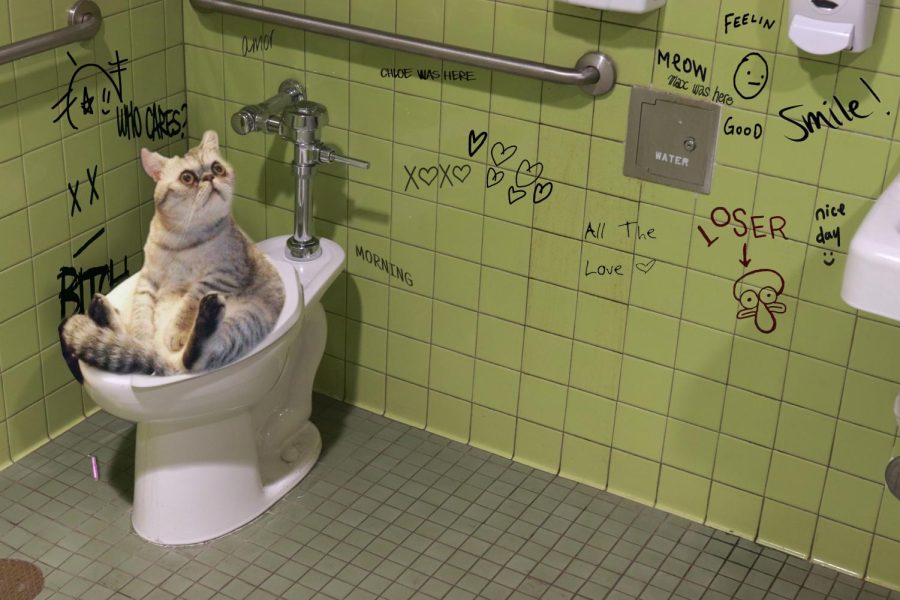Dangers of Flushing Cat Poop in Your Toilet - Precautionary Steps
Dangers of Flushing Cat Poop in Your Toilet - Precautionary Steps
Blog Article
Presented here down the page you'll find some amazing tips relating to How to Dispose of Cat Poop and Litter Without Plastic Bags.

Intro
As pet cat owners, it's important to bear in mind exactly how we deal with our feline pals' waste. While it might appear convenient to purge pet cat poop down the bathroom, this technique can have detrimental repercussions for both the atmosphere and human health and wellness.
Alternatives to Flushing
Luckily, there are much safer and extra responsible ways to deal with cat poop. Think about the complying with choices:
1. Scoop and Dispose in Trash
One of the most common approach of dealing with cat poop is to scoop it into a naturally degradable bag and throw it in the trash. Be sure to utilize a devoted trash inside story and deal with the waste immediately.
2. Usage Biodegradable Litter
Select eco-friendly feline trash made from products such as corn or wheat. These litters are eco-friendly and can be securely disposed of in the garbage.
3. Bury in the Yard
If you have a lawn, think about burying cat waste in a designated location far from vegetable yards and water resources. Make sure to dig deep sufficient to stop contamination of groundwater.
4. Mount a Pet Waste Disposal System
Purchase a family pet garbage disposal system specifically designed for cat waste. These systems make use of enzymes to break down the waste, lowering smell and environmental impact.
Wellness Risks
Along with ecological worries, flushing pet cat waste can also posture wellness dangers to humans. Cat feces might consist of Toxoplasma gondii, a parasite that can create toxoplasmosis-- a possibly serious illness, especially for pregnant females and individuals with weakened body immune systems.
Environmental Impact
Flushing pet cat poop presents hazardous pathogens and bloodsuckers into the supply of water, posing a considerable threat to marine environments. These contaminants can adversely affect aquatic life and compromise water quality.
Final thought
Responsible family pet possession prolongs past giving food and sanctuary-- it likewise entails proper waste monitoring. By refraining from purging cat poop down the commode and choosing different disposal techniques, we can decrease our environmental impact and safeguard human wellness.
Why Can’t I Flush Cat Poop?
It Spreads a Parasite
Cats are frequently infected with a parasite called toxoplasma gondii. The parasite causes an infection called toxoplasmosis. It is usually harmless to cats. The parasite only uses cat poop as a host for its eggs. Otherwise, the cat’s immune system usually keeps the infection at low enough levels to maintain its own health. But it does not stop the develop of eggs. These eggs are tiny and surprisingly tough. They may survive for a year before they begin to grow. But that’s the problem.
Our wastewater system is not designed to deal with toxoplasmosis eggs. Instead, most eggs will flush from your toilet into sewers and wastewater management plants. After the sewage is treated for many other harmful things in it, it is typically released into local rivers, lakes, or oceans. Here, the toxoplasmosis eggs can find new hosts, including starfish, crabs, otters, and many other wildlife. For many, this is a significant risk to their health. Toxoplasmosis can also end up infecting water sources that are important for agriculture, which means our deer, pigs, and sheep can get infected too.
Is There Risk to Humans?
There can be a risk to human life from flushing cat poop down the toilet. If you do so, the parasites from your cat’s poop can end up in shellfish, game animals, or livestock. If this meat is then served raw or undercooked, the people who eat it can get sick.
In fact, according to the CDC, 40 million people in the United States are infected with toxoplasma gondii. They get it from exposure to infected seafood, or from some kind of cat poop contamination, like drinking from a stream that is contaminated or touching anything that has come into contact with cat poop. That includes just cleaning a cat litter box.
Most people who get infected with these parasites will not develop any symptoms. However, for pregnant women or for those with compromised immune systems, the parasite can cause severe health problems.
How to Handle Cat Poop
The best way to handle cat poop is actually to clean the box more often. The eggs that the parasite sheds will not become active until one to five days after the cat poops. That means that if you clean daily, you’re much less likely to come into direct contact with infectious eggs.
That said, always dispose of cat poop in the garbage and not down the toilet. Wash your hands before and after you clean the litter box, and bring the bag of poop right outside to your garbage bins.
https://trenchlesssolutionsusa.com/why-cant-i-flush-cat-poop/

I hope you liked our post about How to Dispose of Cat Poop and Litter Without Plastic Bags. Thank you for finding the time to read through our piece. Sharing is caring. You never know, you may be doing someone a favor. Thanks for going through it.
Call Today Report this page